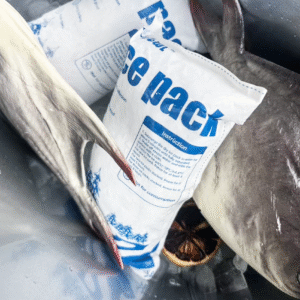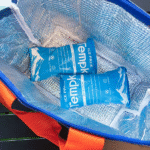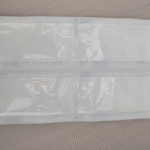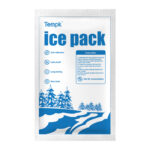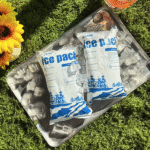Shipping perishable goods overnight demands reliable and efficient cooling solutions. Dry ice pack sheets are a proven method for maintaining low temperatures during transit, ensuring that products remain safe, frozen, and in optimal condition. This guide explores how these sheets work, their advantages, and best practices for proper usage.
-
What are dry ice pack sheets and how do they work for overnight shipping?
-
How do dry ice pack sheets improve shipping efficiency?
-
What are the key safety precautions to consider?
-
How can you properly pack and ship items with dry ice?
What Are Dry Ice Pack Sheets and How Do They Work for Overnight Shipping?
Dry ice pack sheets are specialized cooling products designed to maintain extremely low temperatures during shipping. Made from solid carbon dioxide, these sheets sublimate directly from a solid to gas, which keeps the shipped items cold without leaving any residual moisture that could damage packaging.
Why Dry Ice Pack Sheets Are Essential:
-
Extreme Cold Performance: Dry ice reaches temperatures as low as –78.5°C (–109.3°F), perfect for keeping products frozen during overnight shipments.
-
No Moisture Damage: Unlike ice, which melts into water, dry ice sublimates, leaving no liquid to damage the products.
-
Flexibility and Customization: The sheets are flexible and can be cut to fit the size of the packaging, ensuring a snug fit for perishable goods.
How Dry Ice Pack Sheets Improve Shipping Efficiency
Dry ice pack sheets significantly enhance shipping efficiency by:
-
Long-lasting Cooling: They provide consistent cooling over long periods, ideal for shipments that require an extended frozen state (24–48 hours or longer).
-
Space Efficiency: Compared to bulk ice blocks, dry ice pack sheets are lightweight and flexible, making them easier to pack and store, saving valuable space.
-
Enhanced Product Safety: Dry ice is perfect for shipping temperature-sensitive items like vaccines, pharmaceuticals, and frozen foods where temperature accuracy is crucial.
Real-Life Case Study:
A pharmaceutical company used dry ice pack sheets to transport vaccine batches for a global distribution network. By using dry ice, the company reduced temperature deviations, ensuring that the vaccines arrived at their destination at the proper temperature, preserving efficacy.
Key Benefits of Using Dry Ice Pack Sheets
-
Superior Cooling Duration:
Dry ice keeps goods frozen for extended periods (up to 48 hours), ensuring products remain in a solid, frozen state. -
Prevents Water Damage:
Unlike conventional ice packs, dry ice doesn’t melt into water, which can compromise packaging and lead to spoilage. -
Compact and Lightweight:
Dry ice sheets are thin, flexible, and easy to store, making them an efficient option for overnight shipping. -
Ideal for Temperature-Sensitive Products:
Perfect for shipping frozen foods, biological samples, and pharmaceuticals that require precise temperature control.
Safety Tips for Handling Dry Ice Pack Sheets
Handling dry ice requires specific safety precautions to avoid accidents due to its extreme cold. Here’s how to handle dry ice safely:
-
Use Insulated Gloves: Always wear insulated gloves to prevent frostbite when handling dry ice.
-
Ensure Adequate Ventilation: Dry ice sublimates into carbon dioxide gas, which can displace oxygen in confined spaces. Make sure the area is well-ventilated.
-
Proper Storage: Store dry ice in a cool, dry, well-ventilated area where the gas can dissipate safely.
Example: A logistics company that ships vaccines worldwide follows these safety tips. Their team handles dry ice using gloves and always ensures proper ventilation, preventing any safety issues.
Best Practices for Packing and Shipping with Dry Ice Pack Sheets
To ensure that your items remain cold and arrive safely, follow these best practices:
-
Calculate the Correct Quantity of Dry Ice:
Use a simple weight ratio method to determine the appropriate amount of dry ice needed:-
For overnight shipments, pack half the weight of your product in dry ice (e.g., for a 10 lb shipment, use 5 lb of dry ice).
-
-
Packaging and Ventilation:
Ensure your packaging is both insulated and ventilated. Insulated containers help retain the cold, and vents in the packaging allow the carbon dioxide gas to escape, preventing pressure buildup. -
Proper Labeling and Documentation:
Clearly mark your shipment with “Dry Ice” or “Carbon Dioxide, Solid” and include the UN 1845 number. Ensure that the package is labeled correctly for air or ground transport.
Comparing Dry Ice Pack Sheets with Other Cooling Solutions
While dry ice is often the preferred choice for maintaining sub-zero temperatures, there are other cooling solutions to consider based on the nature of your shipment.
| Refrigerant | Temperature Band | Duration | Best Use Case |
|---|---|---|---|
| Dry Ice Pack Sheet | –78.5°C to –60°C | 24–120 hours | Keeping products frozen solid (meat, ice cream, biological samples) |
| Gel Pack | 0°C to –2°C | 6–36 hours | Chilled goods (produce, cosmetics, vaccines) |
| Phase Change Material (PCM) | +2°C to –20°C (engineered) | 24–96 hours | Vaccines, biologics, mixed loads |
When to Choose Dry Ice:
-
If you need to keep products below –10°C (e.g., frozen foods, medical supplies).
When to Use Gel Packs or PCMs:
-
Use gel packs for chilled goods that must not freeze (produce, chocolate) and PCMs for precise temperature control (vaccines, biologics).
2025 Trends in Dry Ice Shipping
The cold chain logistics industry is continuously evolving. In 2025, the use of dry ice pack sheets has been enhanced by new technologies that improve efficiency and sustainability.
-
Greener Alternatives: New methods of producing carbon-neutral dry ice are reducing the environmental impact of shipping.
-
Smart Packaging and IoT Sensors: Real-time monitoring of temperature and humidity through smart sensors is becoming the norm, allowing for better control over shipments.
Market Insights:
The demand for dry ice pack sheets continues to rise, especially in the pharmaceutical and food industries. Companies are increasingly seeking cost-effective and eco-friendly solutions to ensure the safe transport of perishable goods.
FAQs
Q1: How much dry ice do I need for overnight shipping?
Typically, use half the weight of your shipment in dry ice. For a 10 lb shipment, use 5 lb of dry ice for overnight delivery.
Q2: Can I reuse dry ice pack sheets?
Dry ice sheets are generally single-use, as they sublimate and cannot be reused once they have been exhausted.
Q3: How do I dispose of dry ice?
Allow dry ice to sublimate in a well-ventilated area. Never dispose of it in sinks or drains, as its extreme cold can damage pipes.
Conclusion
Dry ice pack sheets are a reliable and efficient solution for overnight shipping of perishable goods. They offer superior temperature control, preventing spoilage and ensuring product safety. By following best practices, calculating the correct amount of dry ice, and ensuring proper safety measures, you can ensure a smooth and efficient shipping experience.
Next Steps:
-
For pharmaceutical companies, incorporate dry ice pack sheets into your logistics to maintain medication integrity.
-
For food suppliers, explore using dry ice for your overnight shipments to prevent spoilage.
-
For businesses dealing with temperature-sensitive goods, ensure compliance with 2025 regulations and use the latest technologies to optimize your shipping process.
About Tempk:
At Tempk, we specialize in cold chain solutions and offer high-quality dry ice pack sheets for industries ranging from pharmaceuticals to food delivery. Our solutions ensure the safe and reliable transport of perishable goods.






